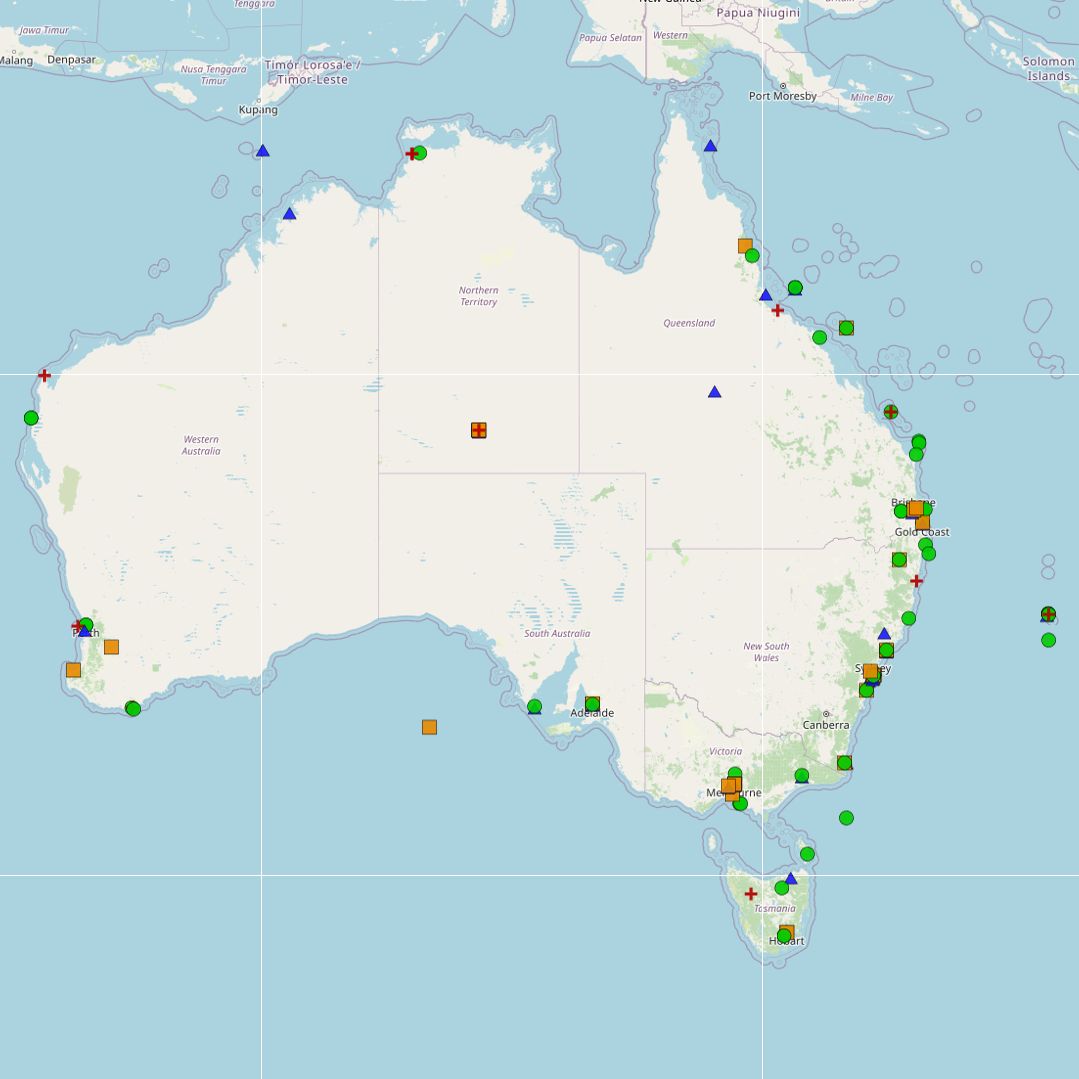EARTH SCIENCE | BIOSPHERE | ECOSYSTEMS | MARINE ECOSYSTEMS | COASTAL
Type of resources
Topics
Keywords
Contact for the resource
Provided by
Years
-
This dataset comprises summaries of sight and resight data compiled for the NESP MBH project A13 and derived from data housed in the Australian Right Whale Photo Identification Catalogue (ARWPIC) and associated effort summaries. These summaries have been compiled as part of an analysis of mark recapture information in establishing trends in the population and spatial connectivity of individuals across southern Australia. The summaries are based on original sightings data collected across 1990-2018 by ARWPIC partners. The ARWPIC is housed at the Australian Antarctic Division and managed by the Australian Marine Mammal Centre.
-

A review of peer-reviewed publications was undertaken, focusing on coastal and marine microplastics relevant to South Eastern Australia (South Australia, Victoria, and New South Wales), as well as from ongoing citizen science programmes from AUSMAP. This dataset summarises basic information about the microplastics studies: the location of the study; if the study focused on water, sediment or biota; the type of biota (for biotic studies); and the DOI of the publication. Although the primary focus of this study was restricted to southeastern Australia, studies collated from other regions have also been included in this dataset. The outcomes of the literature review for other regions (QLD, NT, SA, WA, Tas) should not be considered comprehensive.
-
Tidal wetlands are vulnerable to accelerated rates of sea-level rise projected by climate models. The Surface Elevation Table (SET) is a technique applied globally to assess the extent of vertical adjustment of tidal wetlands to sea-level rise over decadal timescales. This record describes the SET data from the Australian network (OzSET). This data can be used for analyzing wetlands elevation change at the study sites
-
This data is from the 2021 Seeds for Snapper season which is a community volunteer seed based seagrass restoration program located in Perth, Western Australia. It details the effort that went into the collection of Posidonia australis seagrass fruit including number of divers, number of shore support personnel, volunteered hours, and fruit collection metrics (volume, estimated number).
-
The effect of ocean alkalinity enhancement on a coastal phytoplankton community was assessed via a microcosm experiment. The effect of alkalinity enhancement in two scenarios (i) when enclosed seawater was in equilibrium with atmospheric CO2 and (ii) when enclosed seawater was not in equilibrium with atmospheric CO2 were explored. Alkalinity was increased by ~497 umol/kg in these two treatments and plankton communities, carbonate chemistry, dissolved inorganic nutrients, particulate matter and chlorophyll a dynamics monitored over a 22 day period where a spring bloom occurred.
-
These files contain the data recorded from a mesocosm experiment conducted in Bergen, Norway 2022 which assessed the effect of simualted mineral-based (silicate or calcium) ocean alkalinity enhancement (OAE) on diatom silicification. Ten mesocosms were used in total, divided into two groups either the silicate- or calcium based group and alkalinity was increased by either 0, 150, 300, 450 or 600 µmol L-1 above natrually occuring levels. The PDMPO-fluorescence (an appropriate proxy for silicification) of diatoms was recorded on eight seperate days during the experiment. Accompanying data includes measured; macronutrients (nitrate, nitrite, phophate, silicate), total alkalinity, biogenic silica in the water column and sediment trap.
-
In March 2020 UWA and the Malgana Rangers transplanted by hand 36 pieces of Posidonia australis and Amphibolis antarctica into nearby restoration plots at Dubaut Point, Shark Bay. In March 2022 UWA went back to assess survival and shoot growth which is detailed in this dataset.
-
Baited remote underwater stereo-video (stereo-BRUV) were used to sample the fish assemblages of the Hunter Marine Park and adjacent Port Stephens - Great Lakes Marine Park at equivalent depths. Stereo-BRUV were deployed in both autumn and spring from spring 2016 to autumn 2018 and at depth of 32-105m. The videos were analyse to all fish species to the lowest taxonmic level and estimate relative abundance (MaxN) and lengths of all species. This information was used to form a baseline of the benthic fish assemblages of the Hunter Marine Park. This study was done as part of the NESP Marine Biodiversity Hub D3 project (https://www.nespmarine.edu.au/project/project-d3-implementing-monitoring-amps-and-status-marine-biodiversity-assets-continental).
-
The recruitment of mussels and microphytobenthic (MPB) algae to 28 experimental artificial reefs supporting different patch sizes and density of kelp (Ecklonia radiata) off Maria Island, Tasmania. The recruitment of mussels was assessed using rope fibre habitats, and the recruitment of MPB algae was assessed using microscope slides, positioned across the artificial reef and collected in November 2015. These data were collected to examine how the patch size and density of kelp influences the establishment of MPB algae and mussels.
-
The abundance of macroinvertebrates associated with 28 experimental artificial reefs supporting different patch sizes and density of kelp (Ecklonia radiata) off Maria Island, Tasmania. Macroinvertebrates were assessed by diver-based visual census conducted between November 2015 and December 2016. This data was collected to examine how the patch size and density of kelp influences the establishment of macroinvertebrate assemblages.
 IMAS Metadata Catalogue
IMAS Metadata Catalogue